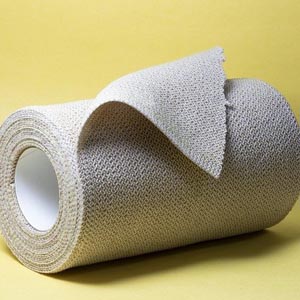Impact of the wound hygiene concept on wound contraction: an experience by ‘Vulnologia ASL3 Regione Liguria’

Submitted: July 24, 2023
Accepted: August 17, 2023
Published: December 14, 2023
Accepted: August 17, 2023
Abstract Views: 382
PDF: 71
PDF (Italiano): 157
PDF (Italiano): 157
Publisher's note
All claims expressed in this article are solely those of the authors and do not necessarily represent those of their affiliated organizations, or those of the publisher, the editors and the reviewers. Any product that may be evaluated in this article or claim that may be made by its manufacturer is not guaranteed or endorsed by the publisher.
All claims expressed in this article are solely those of the authors and do not necessarily represent those of their affiliated organizations, or those of the publisher, the editors and the reviewers. Any product that may be evaluated in this article or claim that may be made by its manufacturer is not guaranteed or endorsed by the publisher.
Similar Articles
- Antonella Marcoccia, Carlo Salvucci, Tina D'Alesio, Tarquinia Nuzzo, Anoush Vartanian, Tiziana Guastafierri, Maria Grazia Modesti, Ultrasonic-assisted wound debridement for scleroderma digital ulcers , Italian Journal of Wound Care: Vol. 1 No. 1 (2017)
- Isabella Lo Castro, The role of the social community networks in the care of chronic wounds , Italian Journal of Wound Care: Vol. 1 No. 1 (2017)
- Giuseppe Nebbioso, C. Albanese, F. Bonat, A. Botta, Giovanni Vito Corona, Cira Costagliola, Corrado Maria Durante, Ciro Falasconi, D. Foglietti, Francesco Giacinto, Pasquale Longobardi, Klarida Hoxha, Cosimo Maglio, Vincenzo Mattaliano, Massimo Menculini, Giovanni Battista Mosti, Carmela Orefice, Sonia Remafedi, Donatella Rossolini, Felice Tafuro, Francesco Petrella, Quality of life study in Wound Care. Final report , Italian Journal of Wound Care: Vol. 1 No. 1 (2017)
- Fabio Mozzarelli, Sara Gaetti, Assessment of vascular ulcers of the lower limbs through the Wound Trend Scale: the experience of the Local Health Authority of Piacenza , Italian Journal of Wound Care: Vol. 2 No. 1 (2018)
- Lisa Turk, Tobias Thuile, Valentina De Marzi, Giovanni Antonacci, Mario Puviani, Klaus Eisendle, Hypericum perforatum and Azadirachta indica (Neem) oil in the management of chronic leg ulcers: An uncontrolled retrospective observational case review , Italian Journal of Wound Care: Vol. 5 No. 2 (2021)
- Ciro Falasconi, Vincenzo Amalfi, Patrizia Baroni, Giovanni Vito Corona, Corrado Maria Durante, Paola Fanin, Caterina Favaro, Massimo Fornaciari, Alessandro Farris, Manuela Galleazzi, Francesco Giacinto, Giorgio Guarnera, Vincenzo Lauletta, Mario Marazzi, Marco Masina, Vincenzo Mattaliano, Giovanni Battista Mosti, Giuseppe Nebbioso, Francesco Stanganello, Francesco Petrella, Survey on issues concerning eHealth and telemedicine in Wound Care , Italian Journal of Wound Care: Vol. 1 No. 1 (2017)
- Francesco Giacinto, Ciro Falasconi, Elisabetta Giacinto, Manuela Germano, Domenica Ciuffoletti, The use of modern technologies based on telemedicine in wound care: experience in high-tyrrhenian region and the province of Cosenza, Italy , Italian Journal of Wound Care: Vol. 2 No. 1 (2018)
- Paola Pini, The skin microbiota and its interactions with the host , Italian Journal of Wound Care: Vol. 6 No. 1 (2022)
- Paola Pini, Skin ulcers-microbiota-infected ulcers , Italian Journal of Wound Care: Vol. 7 No. 3 (2023)
- Chiara Bissoni, Klarida Hoxha, Alessandro Scalise, Pasquale Longobardi, Hyperbaric oxygen therapy and negative pressure wound therapy in the treatment of non-healing wounds , Italian Journal of Wound Care: Vol. 2 No. 3 (2018)
You may also start an advanced similarity search for this article.


 https://doi.org/10.4081/ijwc.2023.105
https://doi.org/10.4081/ijwc.2023.105




